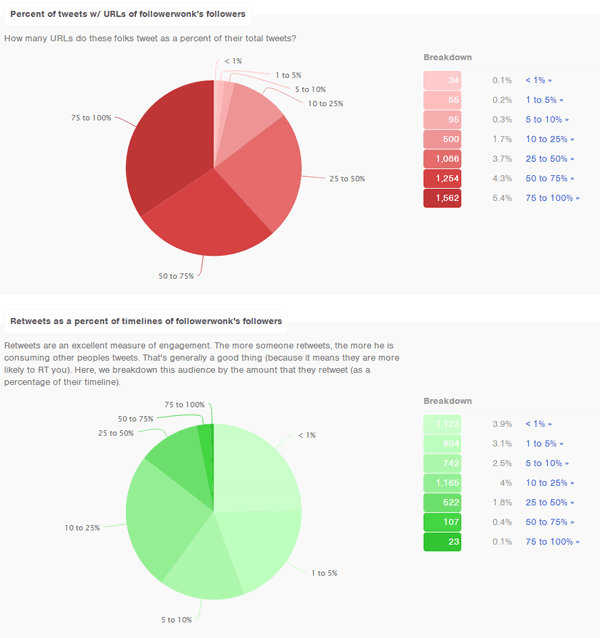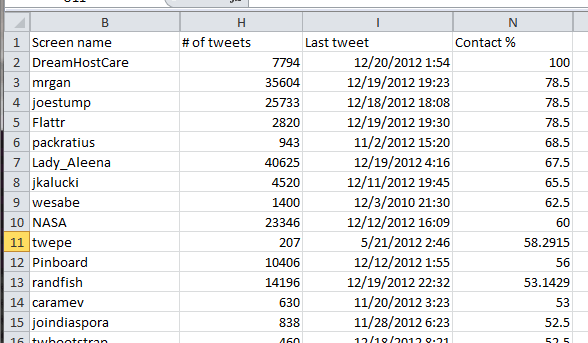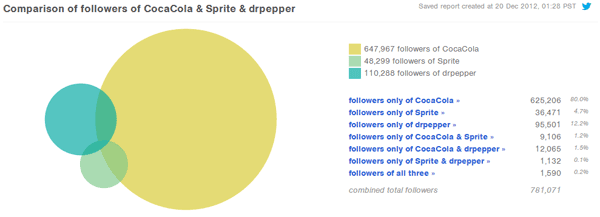
Introducing New Followerwonk Engagement Metrics for Twitter
The author's views are entirely their own (excluding the unlikely event of hypnosis) and may not always reflect the views of Moz.
Editor's note: In December of 2015, Followerwonk became a standalone product, and is no longer included with a Pro subscription. Learn more here.
At Followerwonk, we're all about helping our customers find, engage, and optimize their Twitter audience. We're relentlessly focused on letting you dig into your followers, do advanced searches to help plumb the depths of Twitter, track your social graph, and more.
We're excited for you to explore some of the new metrics we've rolled out today! This new data goes beyond "simple" (yet useful!) items like follower count, friend count, and so on (things that are easily available for our app to process). Our new metrics require us to deeply crawl Twitter users' timelines (that is, their actual tweets and retweets). With this, we're able to surface data that offers new ways for you to better understand your audience, competitors, and prospects.
So, without further ado, let's go to the screenshot...

As you can see, we now tell you an overall engagement percentage for users. Essentially, this tells you how much that user interacts with others on Twitter. For example, users with 82% engagement means that 82% of sampled items from their timeline are @mentions or retweets of other people.
Indeed, this engagement metric is composed of two underlying scores that we also surface for you. @Contact is the percentage of a user's timeline that consists of tweets that directly mention another person (you know, a tweet that begins with @name). And Retweets is the percentage of retweets in their timeline.
Finally, in the Tweets with URLs metric, we'll tell you how often their tweets contain links.
There are a lot of different actionable strategies you can use this data for, and I want to walk you through a few different scenarios that'll also show you where we're surfacing this data right now. (We plan for more exhaustive ways to bubble this data up to you in the new year.)
A few caveats before I begin: this data is "expensive." It requires a lot of API calls, storage, and analysis. As such, we currently only provide these metrics on select Twitter users: namely, those with more than 2,500 followers and, of course, all our Pro members' Twitter accounts. (We do plan to continually expand these metrics to more and more of the Twittersphere.) We also feel that this data is valuable, and so it's exclusively available to PRO users. (If you aren't already a subscriber, this might be just the reason to bring you into the fold!)
Listeners vs Broadcasters
The bottom-line is that you ideally want to find people who will be receptive to @mentions, and who, if they follow you, are consuming your tweets. There's nothing necessarily wrong with "broadcasters" (those who never engage, and simply tweet URLs and observations). In fact, these accounts are often extremely popular simply because they've honed a particular message strategy that works for them.
But the real gold in terms of social media is to find an audience who listens to you: that is, they're likely to engage with you, consume your tweets, and retweet your message to their audience. Ultimately, the real sweet spot is to find this receptive audience among highly influential users (those who, when they retweet you, echo your message far and wide).

With this in mind, we can use Followerwonk's bio search to search for users with, say, "SEO" in their bio. The results come back sorted by follower count (a good proxy for influence, but we can also order by influence), and we can then rollover each user to find their engagement rate to better understand their likelihood of returning an @mention of them.

By looking at the percentage of their tweets that contain URLs, we can also find those accounts that may have limited value (and who may be spammers).

Finding your most receptive followers
Of course, while trawling through random Twitter users may be useful, it is perhaps less productive than digging into who follows you right now. There are several ways to do that. For example, in the advanced search options in bio search, you can limit results to just your followers. This will let you search for "SEO" users among only those who follow you.
Of course, we already have special features to more capably examine all of your followers. That's the Analyze feature.
And we've now included a few new graphs that surface these new metrics for you.

Here, examining @followerwonk's followers, we can view a breakdown of our followers by their engagement. You can run these reports for your own account (or on competitors, friends, customers, and so on). That way, you can click on any of the segments and receive overlays of users in that segment. And, on mouseover, we tell you more details on their engagement:

Of course, you're not limited to this interface. Click the download button and you'll have an Excel (or CSV) report of all of your followers on your desktop in minutes. With that, you can do all sorts of goodness.

Here, I can sort this data to find all those users who tweet 100% URLs. This is a strong spam signal (but not always, of course). There's some thinking that followers of yours who are "spammy" might decrease your overall influence or network reach. In some ways, this is similar to incoming links to your Web site from "bad neighborhood" sites. What to do? Here's where you can possibly optimize your followers (admit you thought that was a strange expression when I said it above!). Use these spreadsheets to assemble a list of possible spam accounts, do further diligence on them (looking at their actual tweets, for example), and consider forcing them to unfollow you. How? Block 'em.
Finding a competitive sweet spot
Let's say you're an startup soda company. (Is there such a thing anymore?)
You want to aggressively court those customers who are going to really take your message of corn syrupy goodness far and wide. Here's how you can use Followerwonk to help. In this example, we're analyzing 3 of the big boys among soda companies:

Note that we can compare these companies' engagement. This helps us plan our social media strategy: it might be useful to match their engagement level Or, maybe not: you might want to run a bit of a contrary course.
Since we've done a deep analysis of these accounts social graphs, we can dig deeper:

You can probably assume that those people who follow all 3 of these soda companies are serious soda-heads. (Is that a thing?) A quick click, and we have another overlay of these users, and a mouseover will tell us all about them, in terms of those most likely to be receptive to our great new soda.
And, yes, you can download these reports into Excel/CSV, too.
Laying the groundwork
As I mentioned, we're expanding these stats across a wider swath of Twitter users, and we're working on other ways to surface them to you.
These new engagement stats are the start of a lot of great new features we have in store for you. In fact, the reason we have these metrics at all is because we need them for something even cooler! You'll just have to wait and see what we've got in store for you...
Meanwhile, please do let us know what you think. Don't forget to find me on Twitter and say hello!



Comments
Please keep your comments TAGFEE by following the community etiquette
Comments are closed. Got a burning question? Head to our Q&A section to start a new conversation.